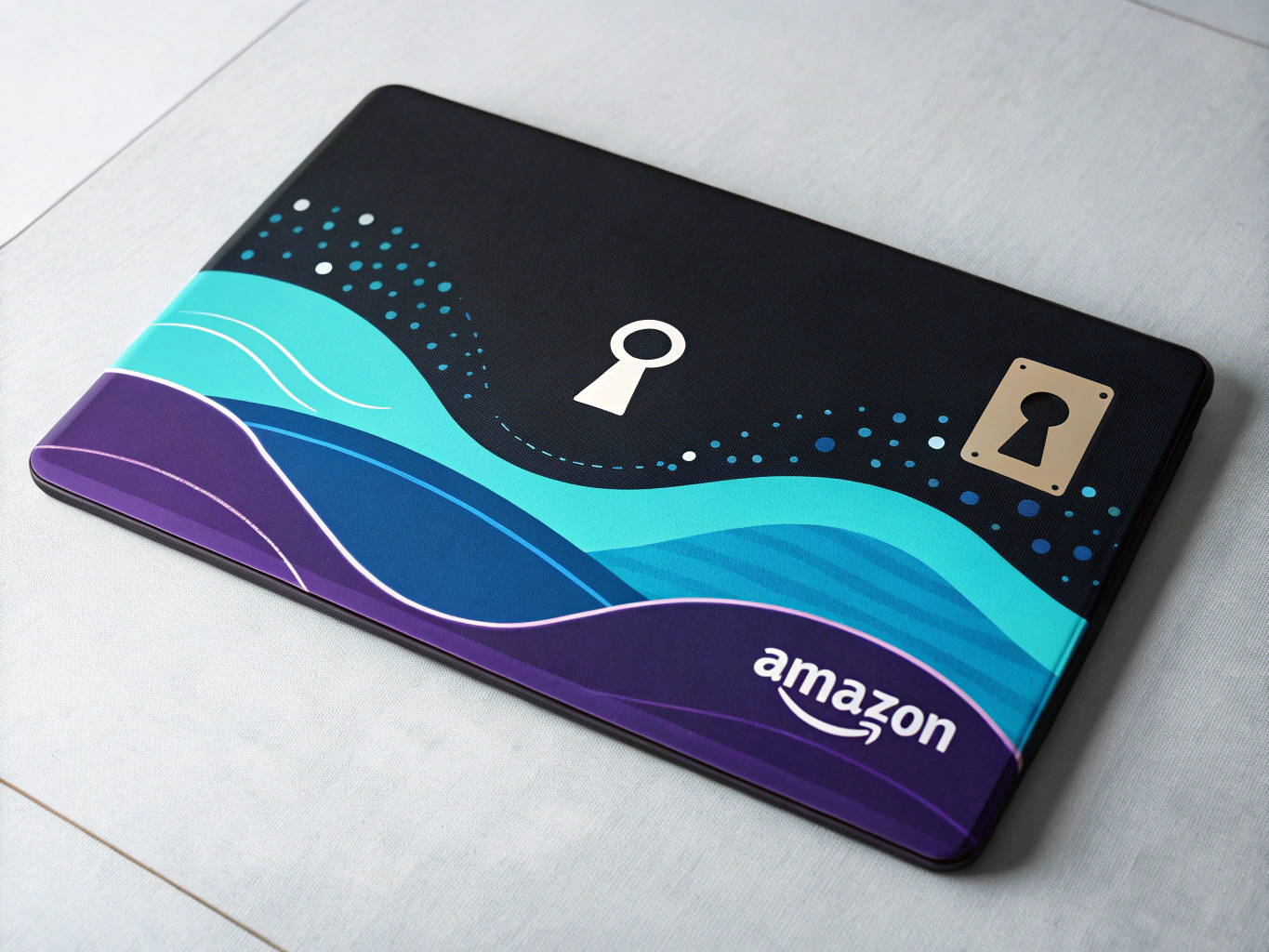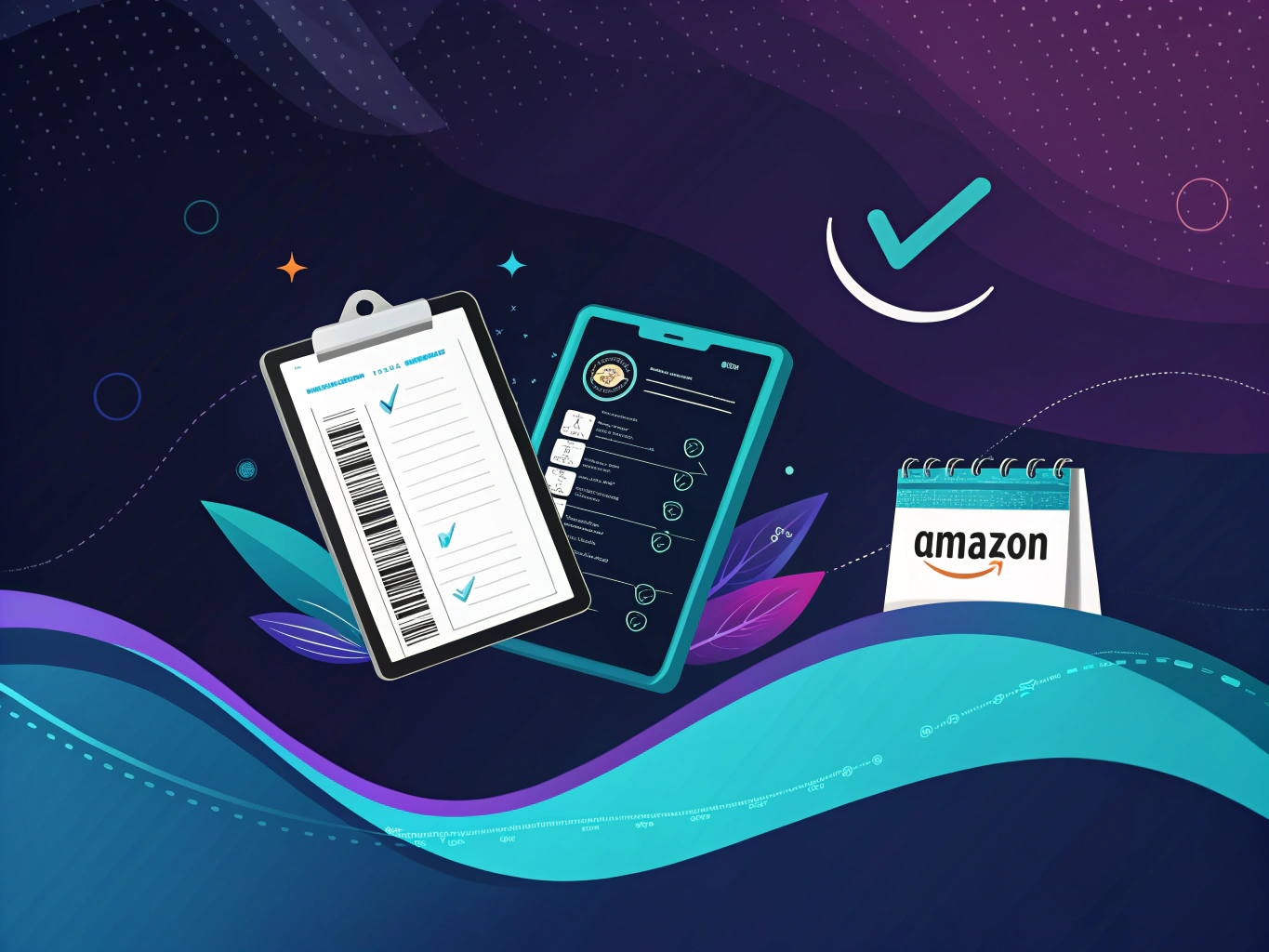Here’s a wild thought: every product you’ve ever bought has a unique numerical fingerprint. Like DNA for commerce, these strings of digits – UPC codes – are the silent backbone of retail. And if you’re selling on Amazon? They’re not just important, they’re absolutely crucial.

I’ve seen countless sellers stumble into the Amazon marketplace thinking UPC codes are just another bureaucratic hurdle. Trust me, they’re not. They’re more like your product’s passport – without one, you’re not getting through customs. And in Amazon’s world, customs is everywhere. If you’re looking to start an Amazon storefront, understanding this is key.
Understanding Amazon UPC Codes: More Than Just Numbers

Think of UPC codes as the social security numbers of the product world. Each 12-digit number is unique, permanent, and tells a story. When it comes to Amazon global logistics, they’re the first thing Amazon looks at to identify your product in their vast digital warehouse.
The Anatomy of a UPC Code
Every product identifier consists of three main parts: the manufacturer prefix (first 6-9 digits), the product reference number (assigned by you), and a check digit (calculated automatically). It’s like a recipe – mess up one ingredient, and the whole thing falls apart.
Why Amazon is Obsessed with UPCs
Amazon’s relationship with UPC codes is like that friend who’s super organized – sometimes annoyingly so, but you can’t deny it makes everything run smoother. The platform uses these codes to:
- Track inventory across multiple warehouses
- Match products with existing listings
- Prevent counterfeit items from entering the system
- Ensure accurate product identification
Getting Your Hands on Valid UPC Codes
Now, here’s where things get interesting. You’ve got two paths to get your amazon barcode: the highway and the alley. The highway is GS1 – the official organization that manages UPC codes globally. It’s like getting your driver’s license from the DMV versus… well, you get the picture.
The Official GS1 Route
Going through GS1 means paying an annual fee and getting legitimate codes that Amazon absolutely loves. Yes, it’s pricier – expect to shell out about $250 for your first 10 codes plus an annual fee. But it’s like buying peace of mind in bulk. Learn more about what GS1 offers at GS1 standards.
The Third-Party Temptation
You’ll find plenty of sellers offering “legitimate” UPC codes for pennies on the dollar. It’s tempting, I know. But here’s the thing: using these is like building your business on quicksand. Amazon’s getting stricter about verification, and the last thing you want is to have your listings pulled because of invalid codes.
The GTIN Exemption: Amazon’s Secret Backdoor

Sometimes, you might not need a UPC code at all. Amazon offers GTIN exemptions for certain categories and situations. It’s like getting a hall pass in school – but you need a really good reason, and you better follow the rules. Learn more about the Amazon tester program for potential exemptions.
To qualify for an exemption, you’ll typically need to:
- Sell private label products
- Have products that traditionally don’t use UPCs
- Be the brand owner or manufacturer
- Provide documentation proving your case
Making the Right Choice for Your Business
Let’s be real – navigating UPC requirements feels like solving a Rubik’s cube blindfolded. But here’s what I’ve learned after years in the trenches: doing it right the first time saves you from massive headaches later. Whether you’re just starting or scaling up, your UPC strategy needs to be solid. Consider using AI optimization strategies to streamline your process.
Think of it this way: your product id strategy is like your business’s foundation. You wouldn’t build a house on shaky ground, so why risk your Amazon business with questionable UPC codes? The upfront cost might sting, but it’s an investment in your business’s future.
The GS1 Path: Getting Official UPC Codes for Amazon
Let’s talk about the elephant in the room – getting legitimate UPC codes for your Amazon products. It’s like getting a passport for your products, except this one’s issued by GS1, the official “government” of product identification. And just like real passports, going through unofficial channels might seem tempting, but it could lead to some serious headaches down the road.
I’ve seen countless sellers in our ProductScope community struggle with this decision. “Jake, these GS1 codes are expensive! Can’t I just grab some cheap ones from eBay?” Sure, you could – but it’s like building your house on quicksand. Not the best foundation for your business.
The Official GS1 Registration Process
Here’s what getting legit UPC codes through GS1 looks like (spoiler: it’s actually pretty straightforward):
- Visit GS1’s website and create an account
- Choose your company prefix based on how many products you plan to sell
- Pay the initial fee (typically starts around $250) plus an annual fee
- Generate your unique product codes through their system
Yes, it’s more expensive than those tempting $2 codes you see floating around online. But think of it this way – would you rather pay $250 now or risk your entire Amazon business later?
Alternative Sources for Amazon UPC Codes: The Good, Bad, and Ugly

Look, I get it. The product identifier game can feel like a racket sometimes. But here’s where things get interesting (and potentially dangerous) with alternative UPC sources.
The Third-Party Marketplace
There’s a whole underground economy of UPC resellers out there. Some claim they’re selling “legitimate” codes they bought years ago. Others are just straight-up selling recycled or fake digit numbers. Amazon’s stance on this? They’re increasingly cracking down on non-GS1 UPCs, and they’re getting better at spotting them.
The GTIN Exemption Route
Here’s something many sellers don’t know about – Amazon’s GTIN exemption program. If you’re selling private label products or handmade items, you might qualify to list without a UPC code. It’s like getting a hall pass, but with some homework required:
- Prove you’re the brand owner
- Show your products don’t have existing UPCs
- Provide detailed product documentation
Implementation: Getting Your Amazon Barcode Game Right
Once you’ve got your UPC codes (the legit way, right?), implementing them correctly is crucial. This is where I see a lot of sellers stumble, especially when dealing with product variations or bundles.
For individual products, it’s pretty straightforward – one product, one UPC code. But what about when you’re selling that same t-shirt in 5 different colors and 6 sizes? That’s 30 different UPC codes you’ll need. Each variation needs its own unique product id.
Bundle Products: The Special Case
Bundling products? You’ll need a new UPC code for that bundle, even if all the individual products already have UPCs. It’s like making a new recipe – even though you know all the ingredients, the final dish needs its own identity.
Managing Your UPC Ecosystem
Here’s where having a solid system becomes crucial. Whether you’re managing 10 products or 10,000, you need a way to track your UPC codes that doesn’t involve a messy Excel spreadsheet (trust me, I learned this the hard way).
Modern UPC Management Tools
There are some fantastic tools out there for managing your amazon barcode requirements. Some of our ProductScope users swear by inventory management systems that can:
- Generate compliant barcodes automatically
- Track UPC assignments across your catalog
- Integrate directly with Amazon’s systems
- Alert you when there are potential issues
The key is finding a system that grows with your business. Starting small? A simple spreadsheet might work. But as you scale, you’ll want something more robust. Let us know in the comments what systems you’re using – I’m always curious to hear what’s working for different sellers.
Common UPC Pitfalls (And How to Avoid Them)
After working with thousands of sellers, I’ve seen some recurring UPC nightmares. The most common? Duplicate listings caused by recycled UPCs. It’s like showing up to a party wearing the exact same outfit as someone else – awkward and potentially problematic. For innovative solutions, check out creative marketing campaigns using AI.
Another frequent issue is invalid UPC formats. Remember, Amazon’s systems are getting smarter at detecting non-standard codes. The platform might accept them initially, but don’t be surprised if you get a nastygram from Amazon later asking you to verify your codes.
Troubleshooting Common Amazon UPC Headaches
Let me tell you something funny – I once spent three hours trying to figure out why Amazon kept rejecting a perfectly valid UPC code. Turns out, someone had typed a ‘3’ instead of an ‘8’ somewhere in the chain. These tiny details matter, folks.
Common issues you might face:
– Invalid UPC errors (usually from buying cheap codes)
– Duplicate listings (when multiple sellers use the same code)
– Brand registry conflicts
– GTIN exemption rejections
Going Global: International UPC Considerations
Here’s where things get interesting. Different markets, different rules. While a UPC code is universal (that’s literally what the ‘U’ stands for), how you use it varies. European markets might prefer EAN codes. Asian markets might have their own systems. It’s like trying to use your Netflix account abroad – same content, different access rules. Similarly, platforms like Facebook Marketplace local only focus on simplifying localized commerce, offering unique challenges and benefits for sellers.
The Future of Product Identification on Amazon

Remember when we thought QR codes were the next big thing? Well, they kind of are now, but not in the way we expected. The same goes for UPC codes and product identification. We’re seeing some fascinating developments:
Emerging Technologies
– Digital watermarks that can store way more data than traditional barcodes
– RFID integration for seamless inventory tracking
– Blockchain-based product authentication (yes, really)
– Smart packaging that interacts with smartphones
What This Means for Amazon Sellers
The game is changing, folks. While the humble UPC code isn’t going anywhere soon, we’re seeing Amazon experiment with new ways to track and identify products. The key is staying flexible and keeping an eye on these developments without getting caught up in every shiny new thing.
Best Practices That Actually Work
After working with hundreds of sellers, here’s what I’ve learned works best:
1. Invest in legitimate UPC codes from GS1 – it’s like buying insurance for your product listings
2. Keep meticulous records – future you will thank present you
3. Use automation tools for tracking and management
4. Have a contingency plan for UPC-related issues
5. Stay updated with Amazon’s changing requirements
Real Talk: Success Stories and Lessons Learned
One of our clients started with 5 products and cheap UPC codes from eBay. Three months later, they were dealing with listing suspensions and duplicate product nightmares. After switching to GS1 codes and implementing proper tracking systems, they’ve scaled to 50+ products without a single UPC issue. Sellers looking for cost-effective strategies may also explore guides on how to sell on eBay for free as part of their diversification efforts.
Final Thoughts on Amazon UPC Management
Here’s the deal – UPC codes might seem like a boring technical requirement, but they’re the foundation of your Amazon business. Think of them as your product’s social security number. You wouldn’t use a fake SSN, so why risk your business with questionable UPC codes?
The future of ecommerce is moving toward more sophisticated product identification systems, but for now, mastering UPC management is crucial, especially if you’re considering platforms like Amazon Handmade vs Etsy, where product tracking and authenticity play a vital role in standing out. Whether you’re just starting or scaling up, taking the time to get this right will save you countless headaches down the road.
Remember, success on Amazon isn’t just about having great products – it’s about managing all the little details that make those products findable, trackable, and sellable. And it all starts with those 12 little digits.
Take Action Now
Review your current UPC setup. Are your codes legitimate? Is your tracking system robust? Do you have a plan for scaling? If you answered ‘no’ to any of these, you know what your next steps should be. Your future self (and your bottom line) will thank you.
👉👉 Create Photos, Videos & Optimized Content in minutes 👈👈
Related Articles:
- Walmart Logo PNG Generator – ProductScope AI
- How to Find Your Shopify Store URL in 3 Easy Steps
- Best Shopify Review Apps: Top 10 Picks for 2024 – ProductScope AI
Frequently Asked Questions
How to get UPC codes for Amazon?
To get UPC codes for Amazon, you need to purchase them from a legitimate source such as GS1, which is the global standard for UPCs. Once you obtain a UPC, you can assign it to your product and use it when listing the item on Amazon.
How to buy UPC codes for Amazon?
You can buy UPC codes for Amazon by visiting GS1’s website and purchasing a prefix, which allows you to generate unique UPCs for your products. Alternatively, you can purchase UPC codes from third-party resellers, though it’s essential to ensure they are legitimate and unused.
Where to buy UPC codes for Amazon?
The most reliable place to buy UPC codes for Amazon is directly from GS1, as this ensures authenticity and global recognition. There are also various online resellers, but caution is advised to avoid invalid or reused codes that could lead to complications when listing products on Amazon.
Do you need UPC codes to sell on Amazon?
Yes, most products listed on Amazon require a UPC code as part of the product identification process. However, there are exceptions for certain categories or if you qualify for a GTIN exemption from Amazon.
Does Amazon require UPC codes?
Amazon generally requires UPC codes for listing products to ensure accurate product tracking and inventory management. However, there are instances where sellers can apply for a GTIN exemption if they meet specific criteria, allowing them to list products without a UPC.
About the Author
Vijay Jacob is the founder and chief contributing writer for ProductScope AI focused on storytelling in AI and tech. You can follow him on X and LinkedIn, and ProductScope AI on X and on LinkedIn.
We’re also building a powerful AI Studio for Brands & Creators to sell smarter and faster with AI. With PS Studio you can generate AI Images, AI Videos, Chat and Automate repeat writing with AI Agents that can produce content in your voice and tone all in one place. If you sell on Amazon you can even optimize your Amazon Product Listings or get unique customer insights with PS Optimize.
🎁 Limited time Bonus: I put together an exclusive welcome gift called the “Formula,” which includes all of my free checklists (from SEO to Image Design to content creation at scale), including the top AI agents, and ways to scale your brand & content strategy today. Sign up free to get 200 PS Studio credits on us, and as a bonus, you will receive the “formula” via email as a thank you for your time.
